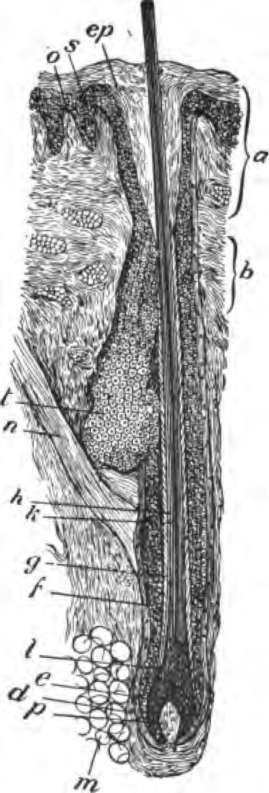Nails Fo Humans
Description
This section is from the book "The Human Body: An Elementary Text-Book Of Anatomy, Physiology, And Hygiene", by H. Newell Martin. Also available from Amazon: The Human Body.
Nails Fo Humans
A nail is a part of the epidermis, with its horny stratum greatly developed. The back part of the nail fits into a furrow of the dermis, and is called its root. The visible part consists of a body, attached to the dermis beneath (which forms the bed of the nail), and of a free edge. Near the root is a little area, whiter than the rest of the nail, called the lunula. The whiteness is due in part to the nail being really more opaque there, and partly to the fact that its bed, which seen through the nail causes its pink color, is in this region less vascular.
The portion of the corium on which the nail is formed is called its matrix. Behind, this forms a groove lodging the root of the nail, and it is by new cells added there that the nail grows in length. The part of the matrix lying beneath the body of the nail, and called its bed, is highly vascular; new cells formed on its bed and added to its under surface cause the nail to increase in thickness, as it is pushed forward by the new growth at its root. The free end of a nail is therefore its thickest part. If a nail is "cast" in consequence of an injury, or torn off, a new one is produced, provided the matrix is not destroyed.

Fig. 77. Ep, horny layer of epidermis, lining mouth of follicle and continued down it; S, Malpighian layer; o, a papilla of the dermis; L, root of the hair; p, papilla of skin on which the hair grows; t, a sebaceous gland; m, fat cells.
Name regions of the skin which have no hairs. What is a hair ?
What is a hair follicle ? What is the root of a hair? The stem ? Of what is a hair composed ?
What is a nail ? Of what parts does it consist ? What is the lunula? Why is it paler in color than the rest of the nail?
Continue to:
